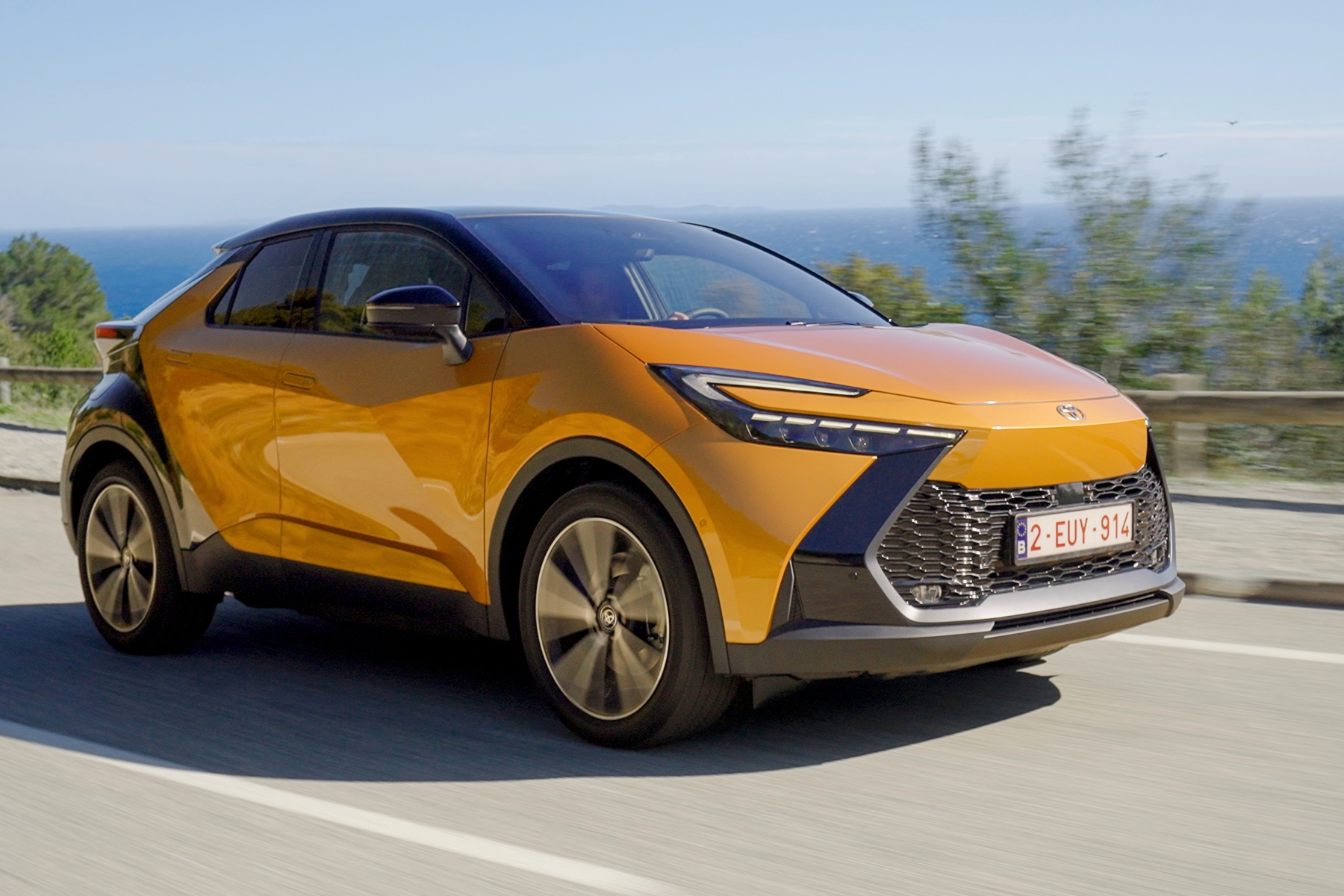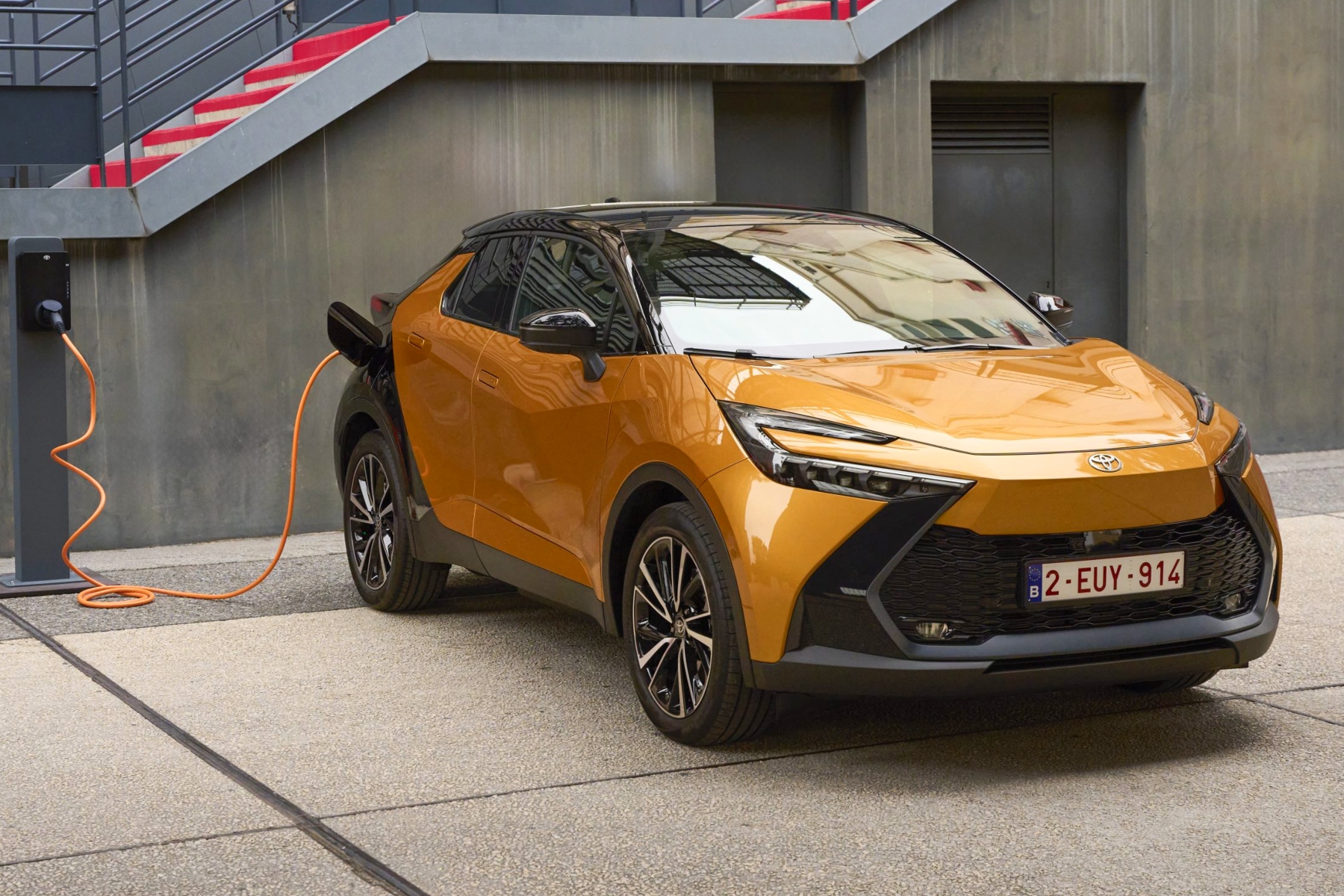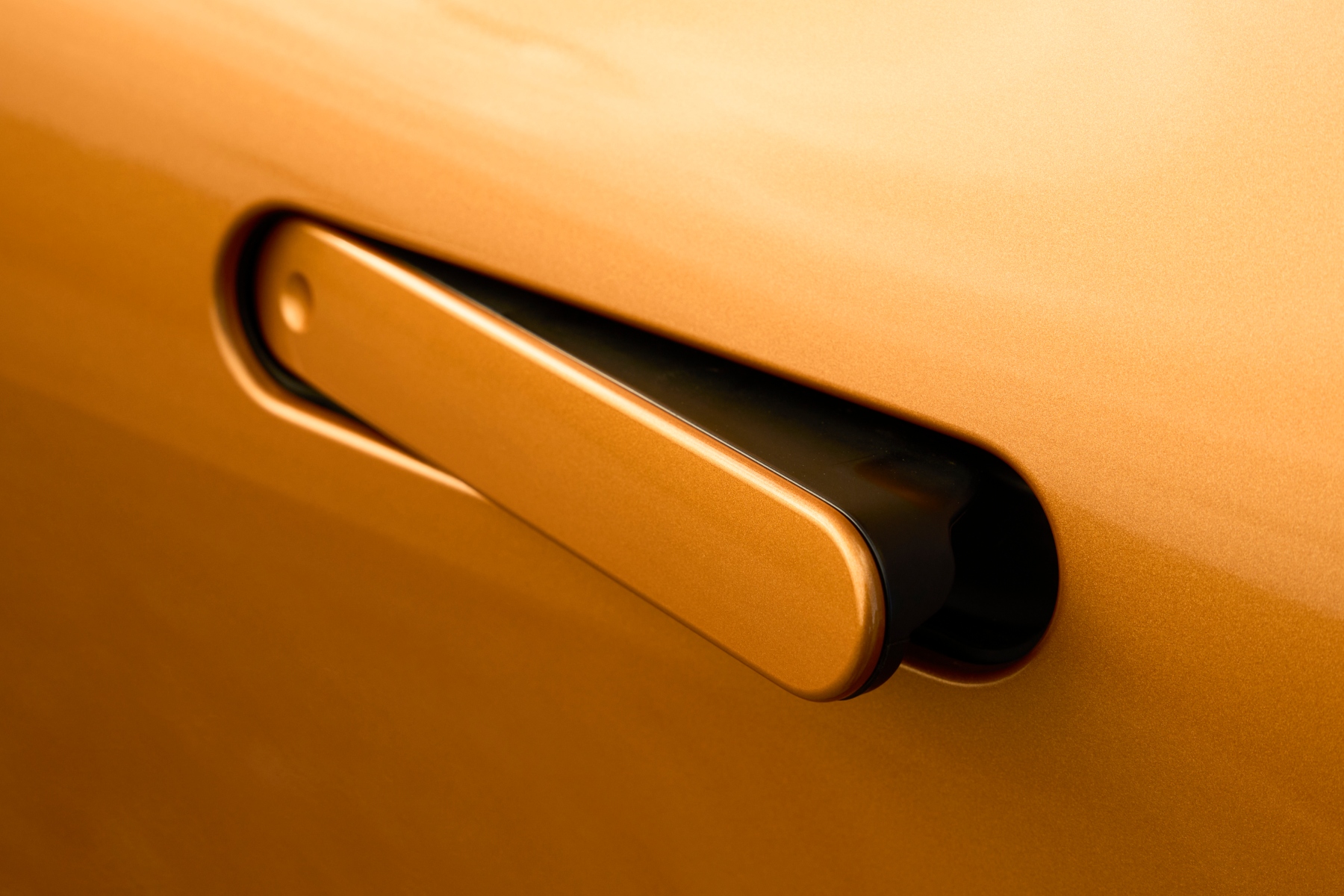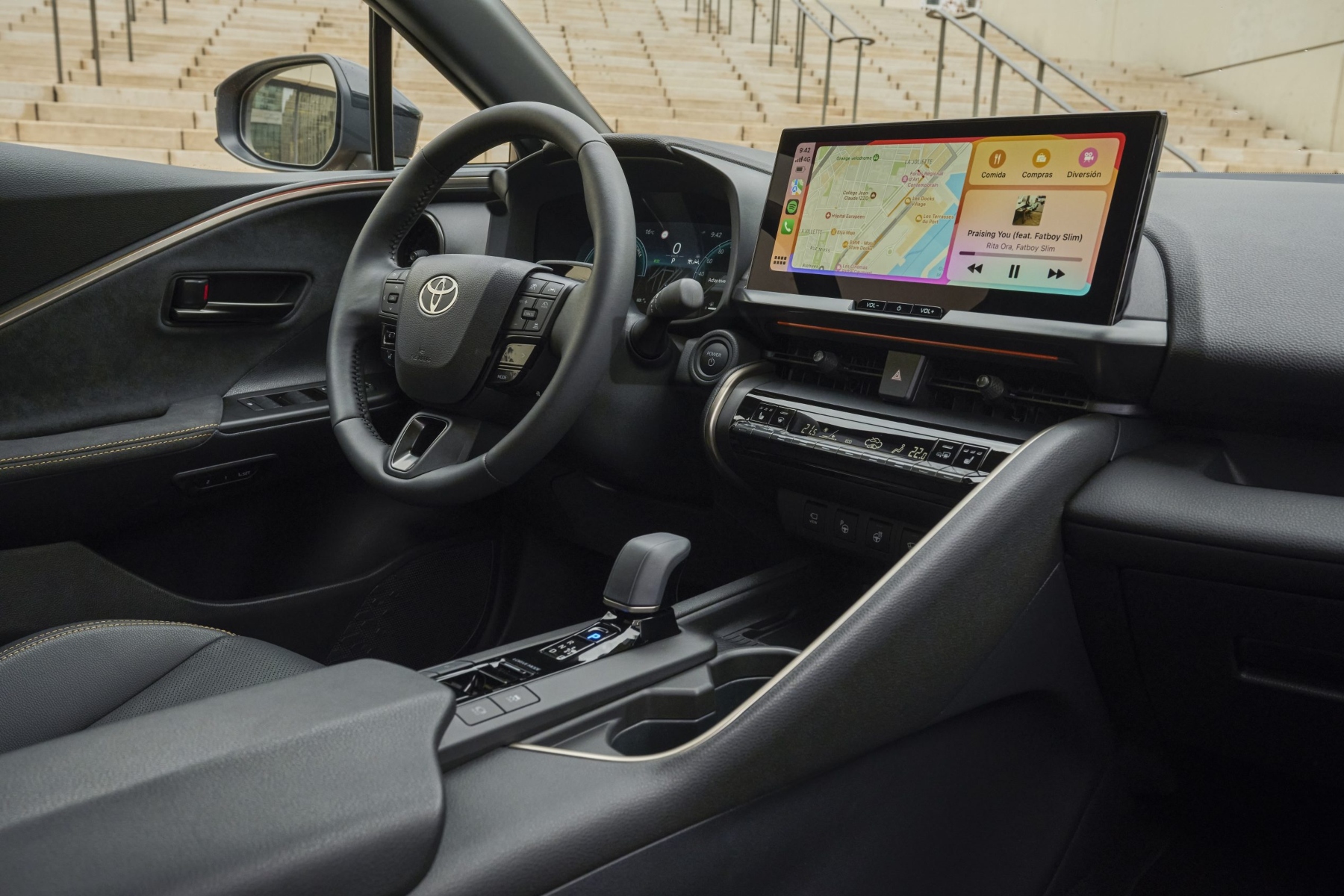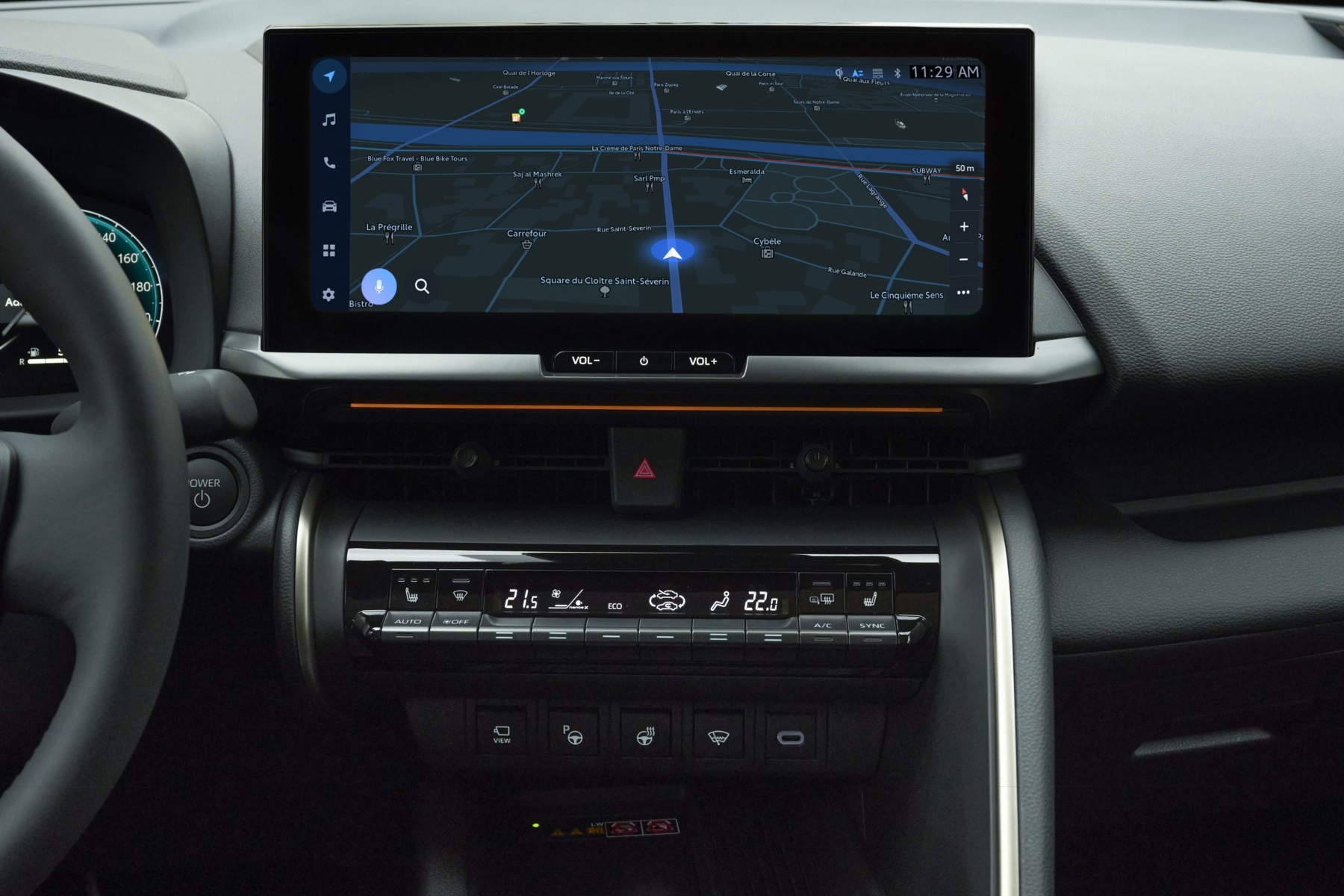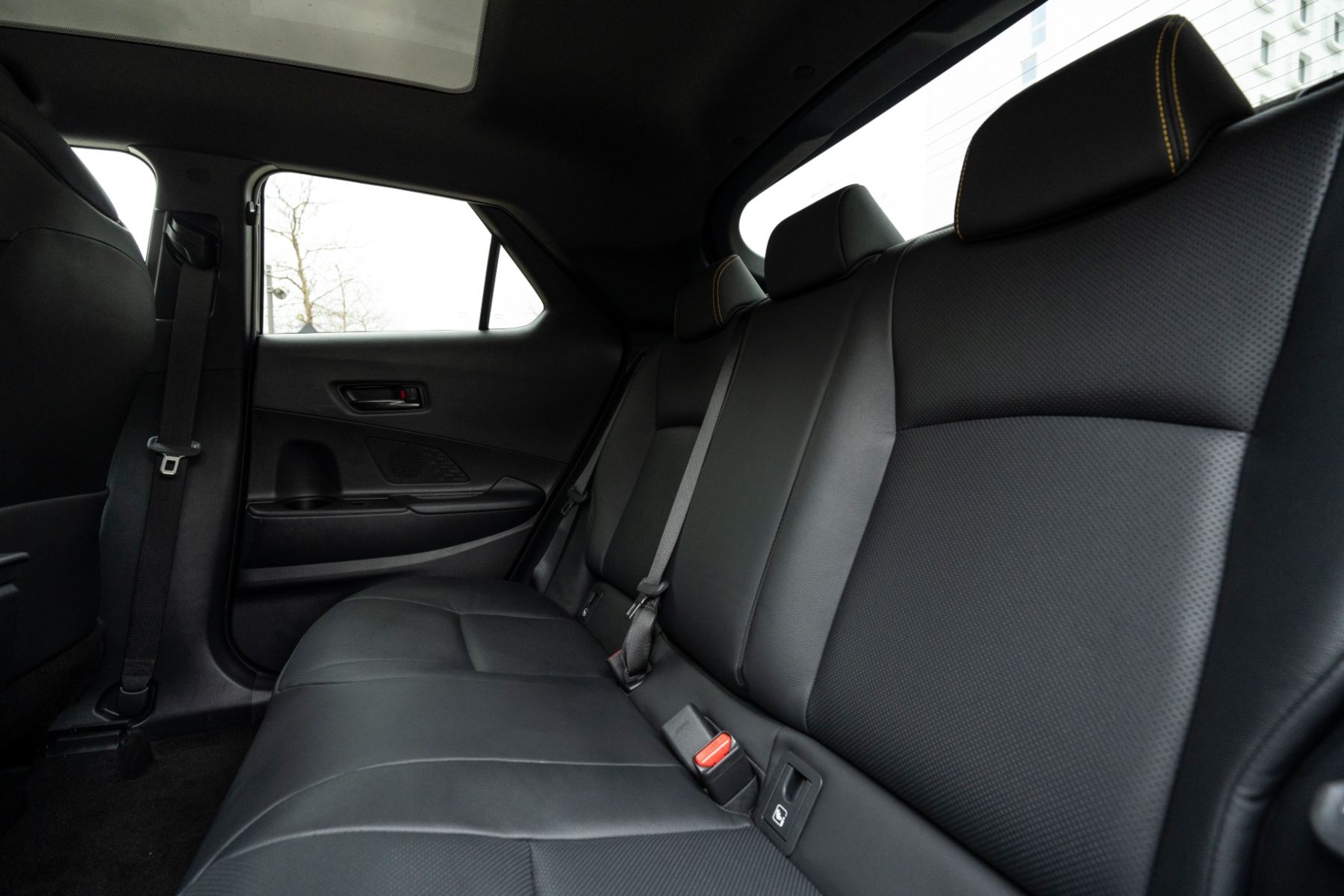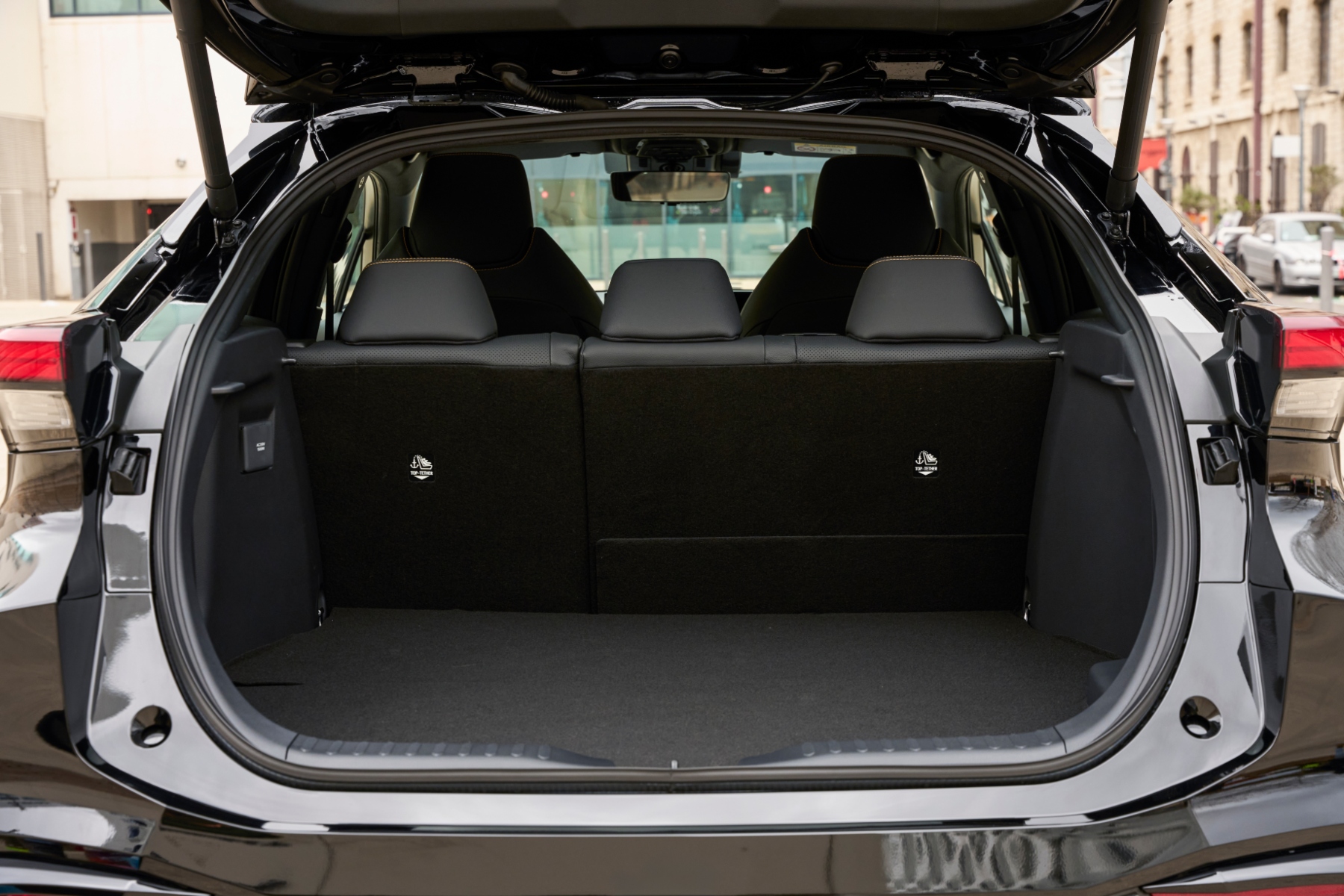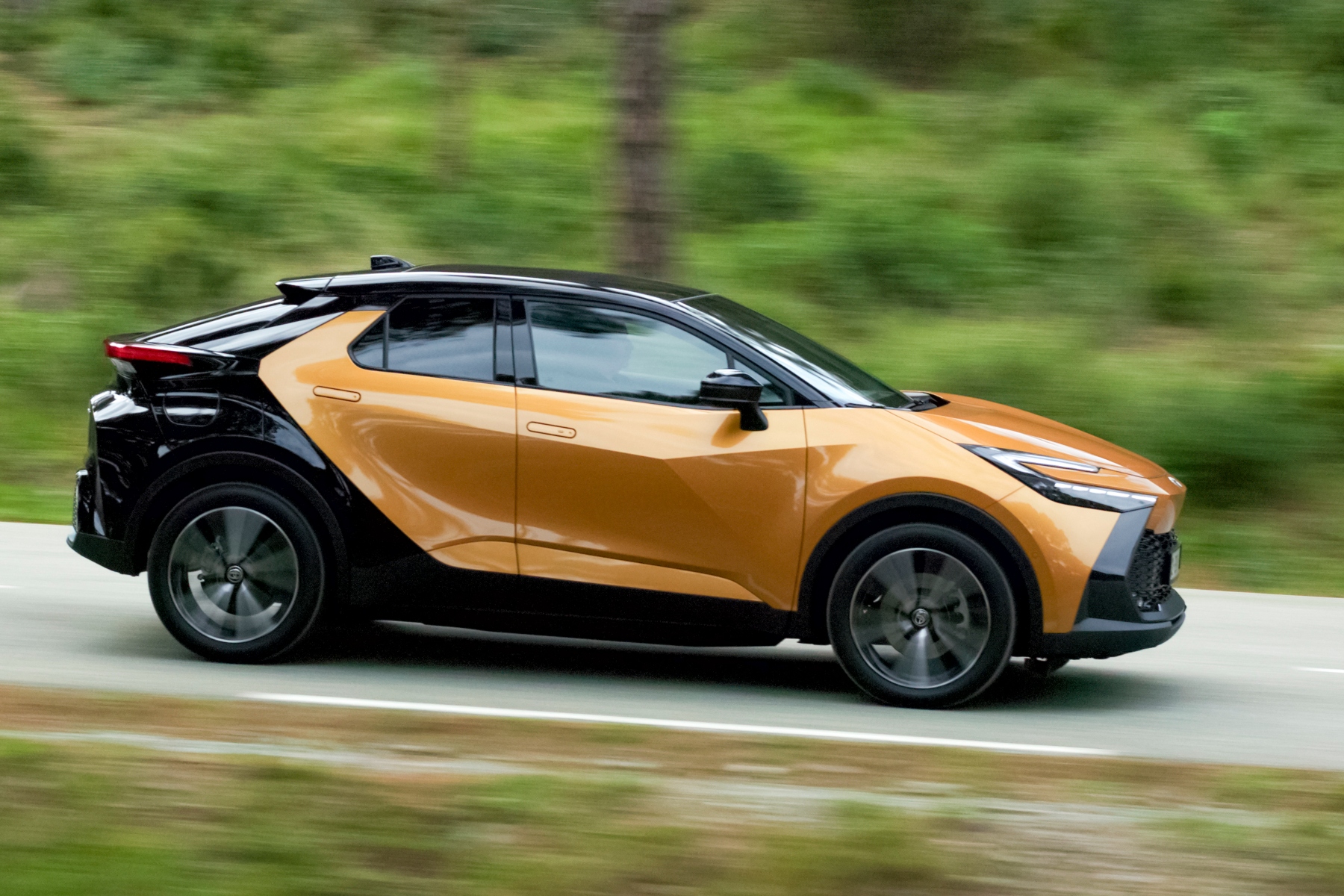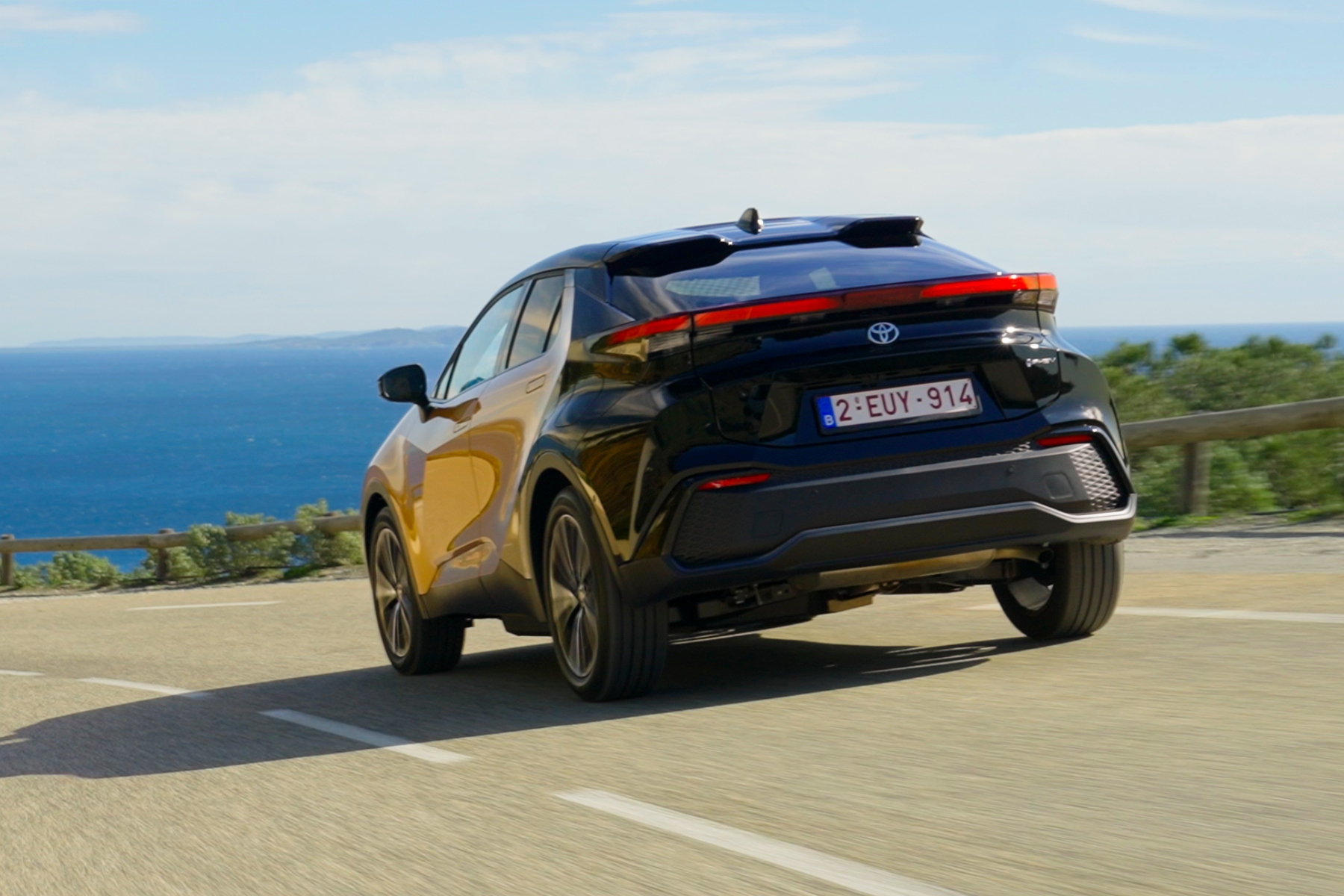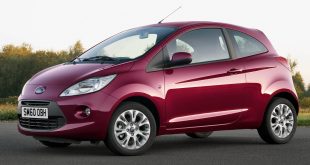We put the PHEV version of Toyota’s funky family car through its paces…
Cards on table time. We’re already fans of the latest Toyota C-HR family crossover. If a car could be judged purely on its styling, it would be best-in-class.
When we first tested the second-generation C-HR in 2023, it was the full hybrid (‘self-charging hybrid’ in Toyota-speak) version.
Now the new C-HR’s appeal has been widened further with the addition of a plug-in hybrid to the line-up.
Before we assess the PHEV, let’s time travel back to 2017 when the first generation ‘Coupe-High Rider’ was launched in the UK.
With its radical looks, it was something of a departure for Toyota which was still selling the conservative Auris and Avensis at the time.
The funky C-HR was a aerodynamic crossover with a low-slung roofline like a coupe. Distinctively styled with a big roof spoiler and sloping rear window, it sold very well but it wasn’t without issues.
The new Toyota C-HR is a looker. A more grown-up version of the outgoing model, it boasts a wider stance and the original’s curves have been replaced by sharper lines and solid surfacing.
Once again there’s a heavily raked tailgate, though this time it features a dual-element rear spoiler and a full-width LED light bar below with an illuminated ‘C-HR’.
At the front, it features the new ‘hammerhead’ face of Toyota SUVs, while the ‘hidden’ raised rear door handles have been replaced by retractable ones, front and rear. Overall build quality, interior materials and technology have also been upgraded.
The plug-in hybrid C-HR is priced from £39,145, which is a jump from the entry-level full hybrid model (£31,290). Additionally, there are three PHEV trim levels – Design, Excel and GR Sport.
It uses the same 2.0-litre four-cylinder petrol engine as the most powerful hybrid model. However, it’s paired with a bigger electric motor (161bhp) and larger battery pack (13.6kWh compared to 11.1kWh), boosting total output from 194bhp to 220bhp.
This extra power translates into a swift 0–62mph time of 7.4 seconds, compared to 8.1 seconds for the 2.0-litre hybrid model and 10.2 seconds for the 1.8-litre hybrid model. It’s also worth noting that the C-HR PHEV is front-wheel drive – there is no AWD option.
In theory, the plug-in hybrid is capable of 353.1mpg, while CO2 emissions are a low 19g/km, putting it in the 8% benefit-in-kind company car tax band.
But, of course, it’s the fact that the PHEV has an all-electric driving range of up to 41 miles (more than most rivals) that matters most. If you can charge at home and your commute is short (or you just use your car for short journeys) your trips to the garage could be few and far between.
As with all plug-in hybrids, it’s most economical when it’s not used for long journeys and is kept charged up.
Significantly, Toyota says the C-HR PHEV uses less fuel when running in hybrid mode compared to most competitor plug-ins because the clutch-less dual motor system eliminates friction and wear. We’d need a week or so with the car to be able to comment, but we certainly noticed the EV light regularly popping up on the dash while driving.
First impressions count, and the second-gen Toyota C-HR certainly oozes kerb appeal, especially if you opt for a two-tone paint-job.
In terms of size, its dimensions are almost identical to the Suzuki S-Cross, which makes it a tad smaller than its main competitors (including the Nissan Qashqai), but bigger than cars in the class below (eg Nissan Juke).
The driving position will be on the high side for some, but you soon get used to it because it’s comfortable with a decent amount of support.
There are roomier cabins, not just because the C-HR isn’t as wide as some rivals, but the driver focused set-up with high centre console makes it snug, especially on the passenger side.
The good news is that the 12.3-inch infotainment touchscreen combined with the driver’s digital display looks the part and works well enough. And mercifully, the C-HR has some physical controls for essentials such as air-conditioning.
There’s reasonable space for passengers at the back, while the cabin as a whole has a classier feel, with more soft-touch surfaces.
Toyota’s also ticked the sustainability box because the seat fabrics are made from recycled plastic bottles and there’s animal-free ‘leather’ on the steering wheel.
Load capacity is a modest 310 litres (down from 388 litres in the 1.8 Hybrid), while the 60:40 split rear seats flip to increase cargo volume to 1,076 litres.
Visibility is good ahead, but slightly more challenging behind thanks to those chunky rear pillars and small rear windows. Thankfully, all versions have a reversing camera.
On the road, the C-HR is refined for the most part. Every time you start a journey, it defaults to fully-electric mode and it will continue that way until it’s run out of battery charge.
However, if you’re heavy with your right foot, or your battery is out of charge, the petrol engine will kick in.
Drive smoothly and it’s fine, but if you hustle it the CVT automatic gearbox causes the revs to rise and stay high until you’ve reached your desired speed. The din in the cabin soon settles down, but it puts you off driving anything but sensibly.
That said, it has a supple suspension with only the worst lumps and bumps upsetting the calm progress. So, it’s one of the more comfortable SUVs on the market.
Light steering suits its natural urban habitat well, but the C-HR is at its best cruising along. It would be an exaggeration to call it dynamic on entertaining B-roads, but it’s agile and there are good levels of body control, while grip is decent.
The C-HR flips between electric and engine drive seamlessly, and it’s as close as you can get to driving a 100% electric car when it’s running in EV mode.
The other three modes available are auto EV/HV, HV and charging.
In EV/HV mode the engine will engage when extra power is needed, returning to EV running afterwards.
HV mode helps maintain the battery’s state of charge and is engaged automatically when battery charge runs low, while charging mode can be used when the driver wants to charge the EV battery when driving, using power generated by the engine.
Additionally, there are three drive modes – Normal, Eco and Sport – plus Custom, which allows the driver to select their preferred powertrain, steering and air conditioning settings.
Finally, it’s always worth remembering that the C-HR comes with a three-year warranty that extends up to 10 years/100,000 miles so long as your car is serviced annually at an authorised Toyota workshop.
Verdict: The eye-catching Toyota C-HR Plug-in Hybrid is easy to drive, comfortable and well equipped, with the potential to be super economical. It may not be the cheapest or most spacious family PHEV, but it’s definitely got that wow factor.
 Automotive Blog Automotive Blog brings you the latest news, car reviews and information on the automotive industry.
Automotive Blog Automotive Blog brings you the latest news, car reviews and information on the automotive industry.
